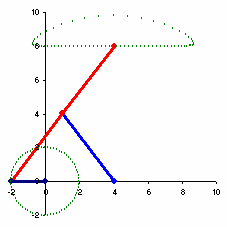Stepper Motors and Linear Induction Motors
 A linear induction motor is made up of an inductor which is made of individual cores with a concentrated poly phase. Linear induction motor can be directly substituted for ball screw drives, hydraulic drives, pneumatic drives, or cam drives.
A linear induction motor is made up of an inductor which is made of individual cores with a concentrated poly phase. Linear induction motor can be directly substituted for ball screw drives, hydraulic drives, pneumatic drives, or cam drives.A linear induction motor is basically what is referred to by experts as a “rotating squirrel cage” induction motor. The difference is that the motor is opened out flat. Instead of producing rotary torque from a cylindrical machine it produces linear force from a flat machine. The shape and the way it produces motion is changed, however it is still the same as its cylindrical counterpart. There are no moving parts, however and most experts don’t like that. It does have a silent operation and reduced maintenance as well as a compact size, which appeals many engineers. There is also a universal agreement that it has an ease of control and installation. These are all important considerations when thinking about what type of device you want to create. The linear induction motor thrusts ratio varies depending mainly on the size and rating. Speeds of the linear induction motor vary from zero to many meters per second. Speed can be controlled. Stopping, starting and reversing are all easy. Linear induction motors are improving constantly and with improved control, lower life cycle cost, reduced maintenance and higher performance they are becoming the choice of the experts. Linear induction motors are simple to control and easy to use. They have a fast response and high acceleration. Their speed is not dependant on contact friction so it is easier to pick up speed quickly.
Stepper motors are a special kind of motor that moves in discrete steps. When one set of windings is energized the motor moves a step in one direction and when another set of windings is energized the motor moves a step in the other direction. The advantage of stepper motors that the position of the motor is "known". Zero position can be determined, if the original position is known.
Stepper motors come in a wide range of angular resolution and the coarsest motors typically turn 90 degrees per step. High resolution permanent magnet motors are only able to handle about 18 degrees less than that. With the right controller stepper motors can be run in half-steps, which is amazing.
The main complaint about the stepper motors is that it usually draws more power than a standard DC motor and maneuvering is also difficult.
The followings are from wikipedia.org ...
Stepper motors operate differently from normal DC motors, which rotate when voltage is applied to their terminals. Stepper motors, on the other hand, effectively have multiple "toothed" electromagnets arranged around a central gear-shaped piece of iron. The electromagnets are energized by an external control circuit, such as a micro controller. To make the motor shaft turn, first one electromagnet is given power, which makes the gear's teeth magnetically attracted to the electromagnet's teeth. When the gear's teeth are thus aligned to the first electromagnet, they are slightly offset from the next electromagnet.
So when the next electromagnet is turned on and the first is turned off, the gear rotates slightly to align with the next one, and from there the process is repeated. Each of those slight rotations is called a "step," with an integer number of steps making a full rotation. In that way, the motor can be turned by a precise angle.




Comments